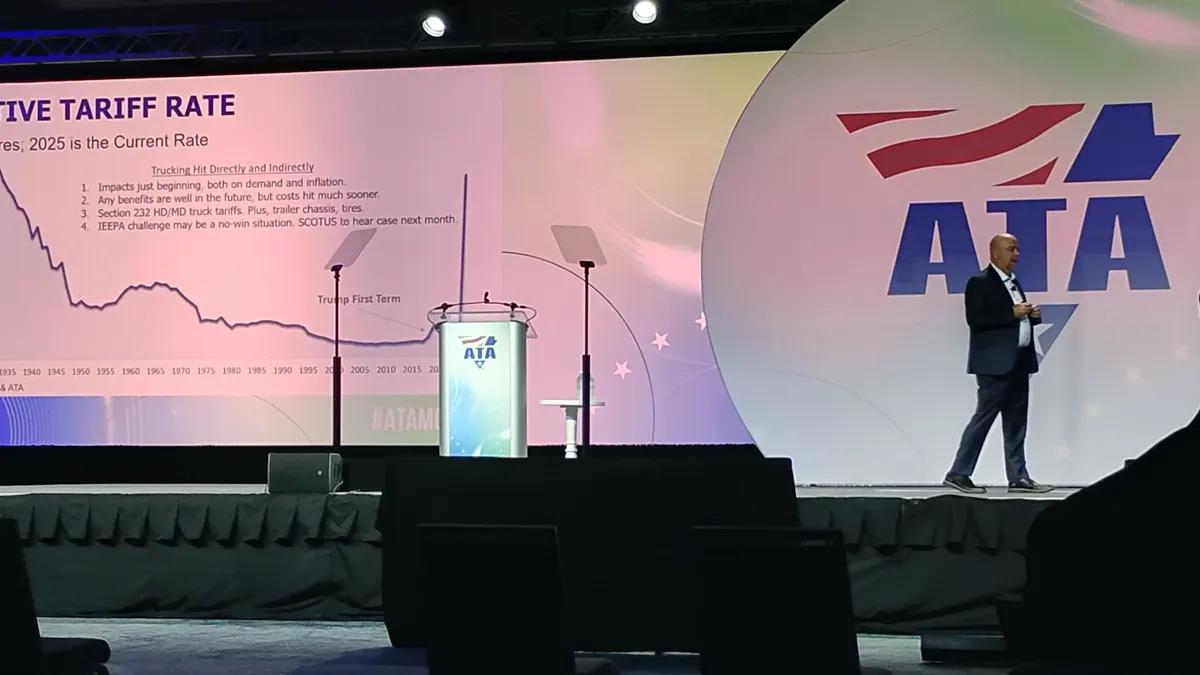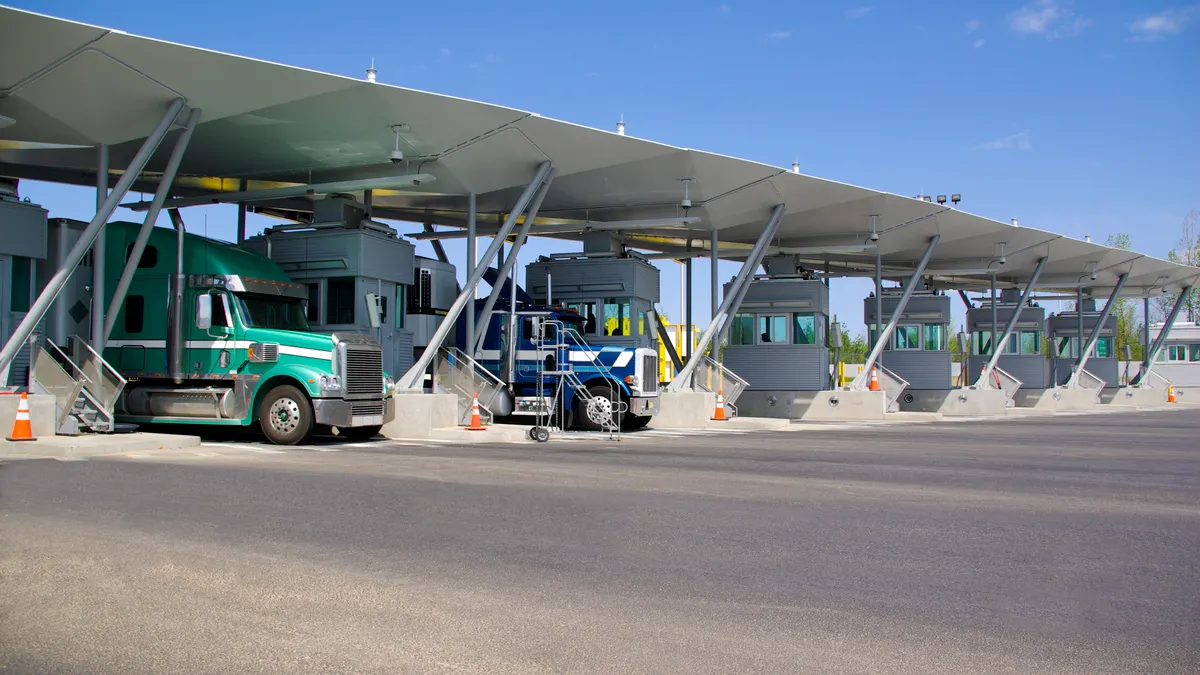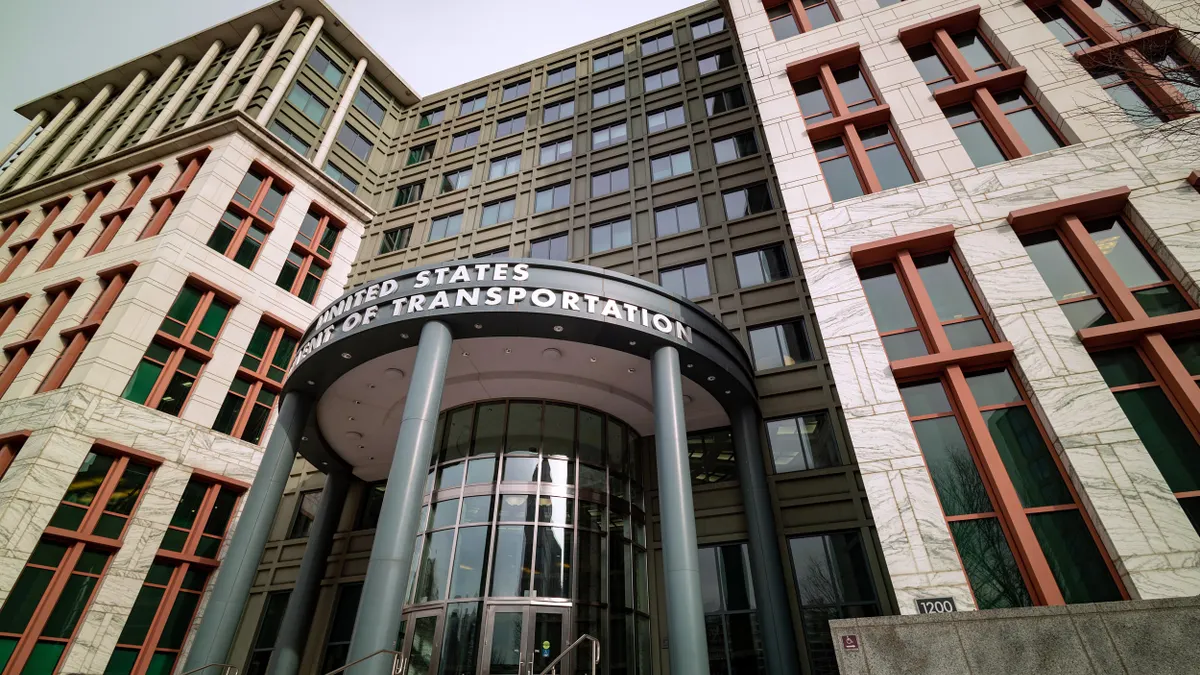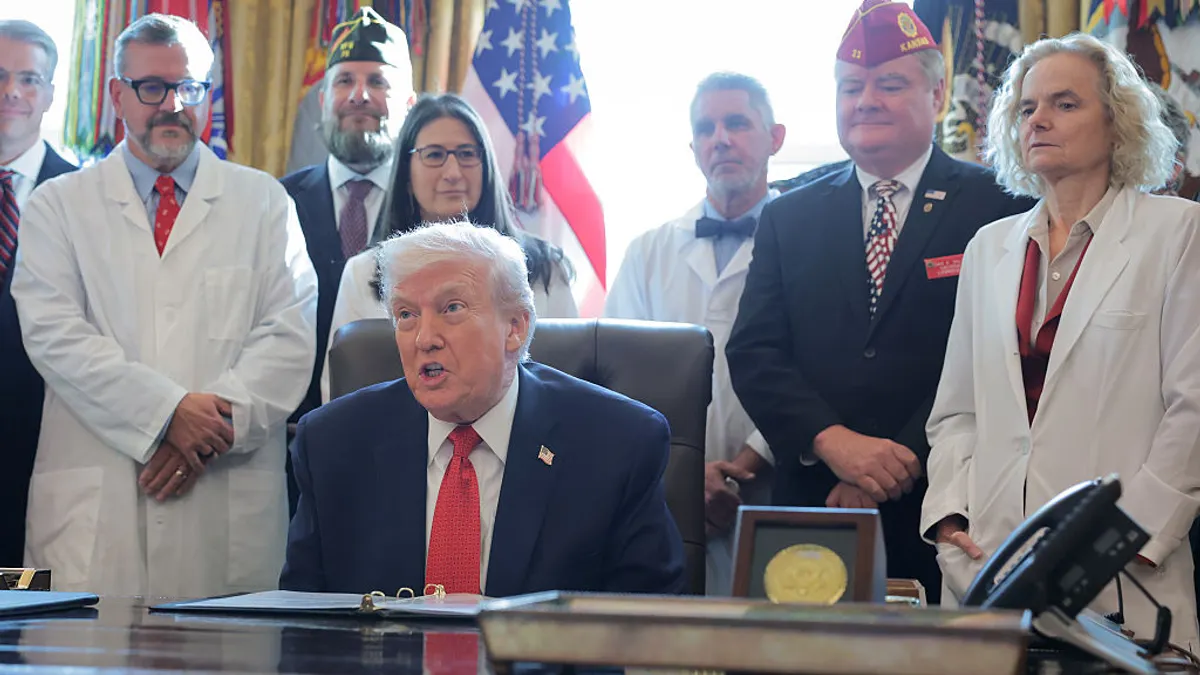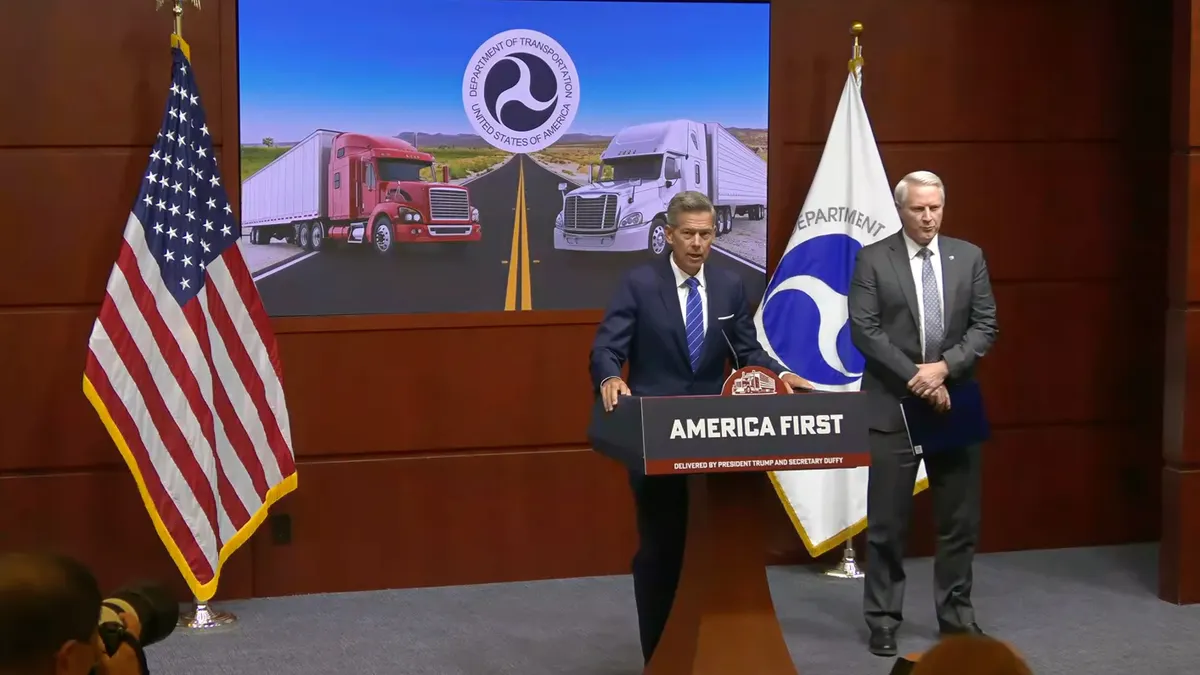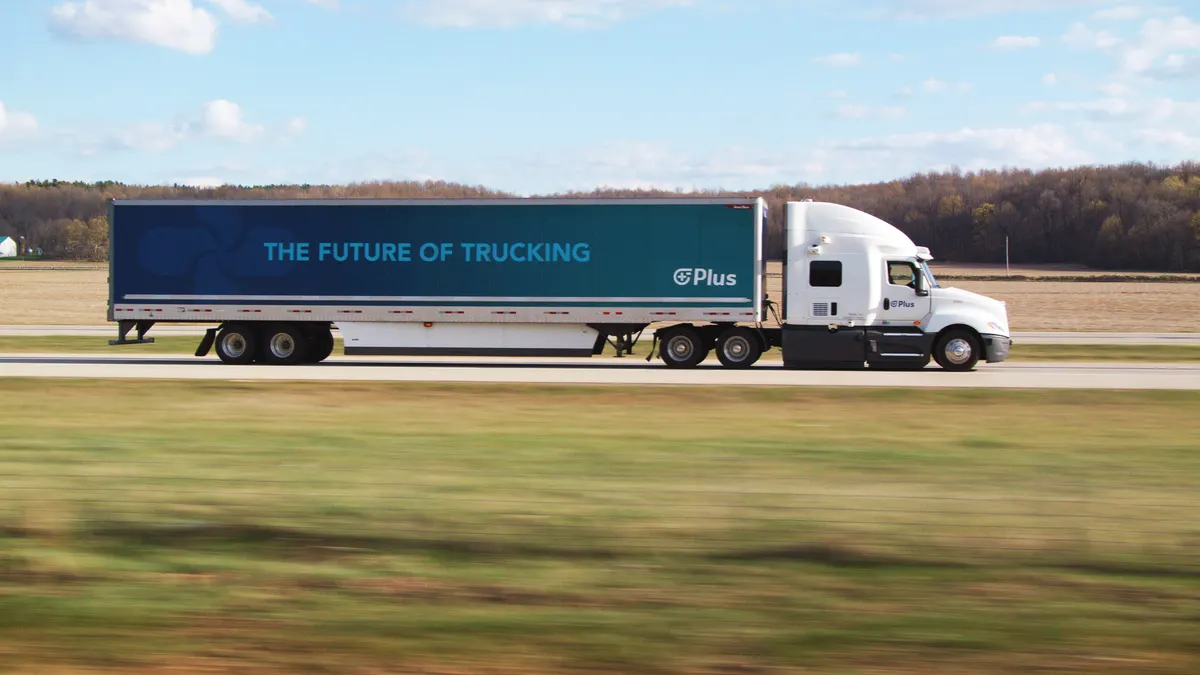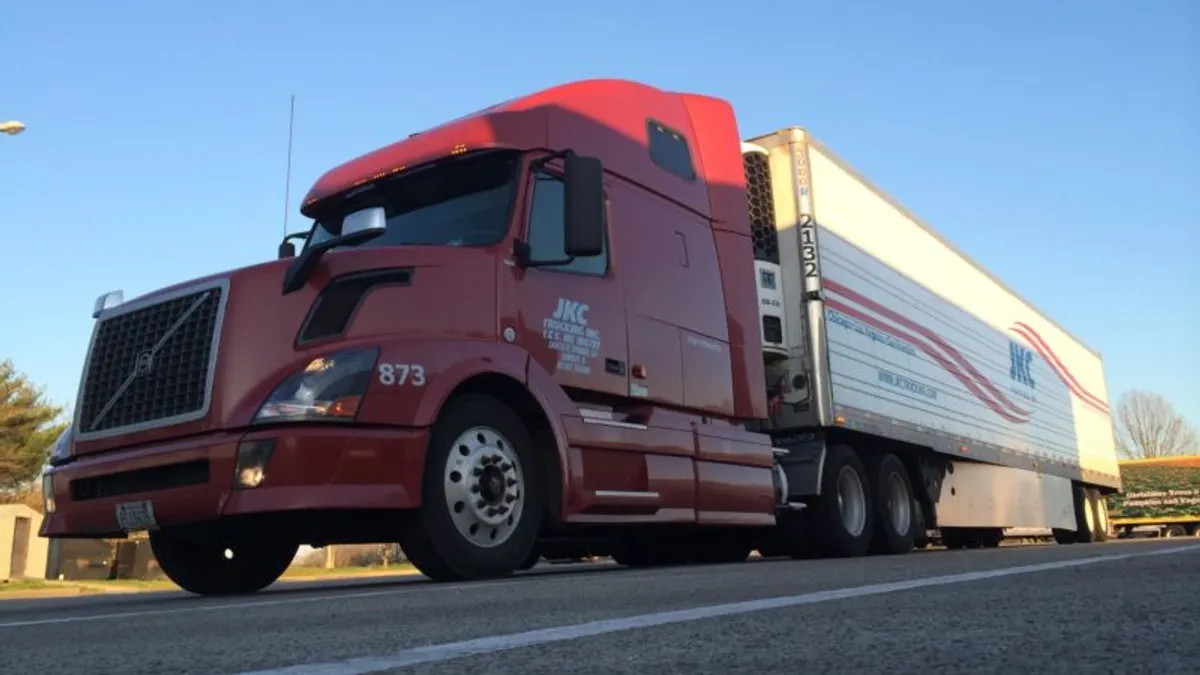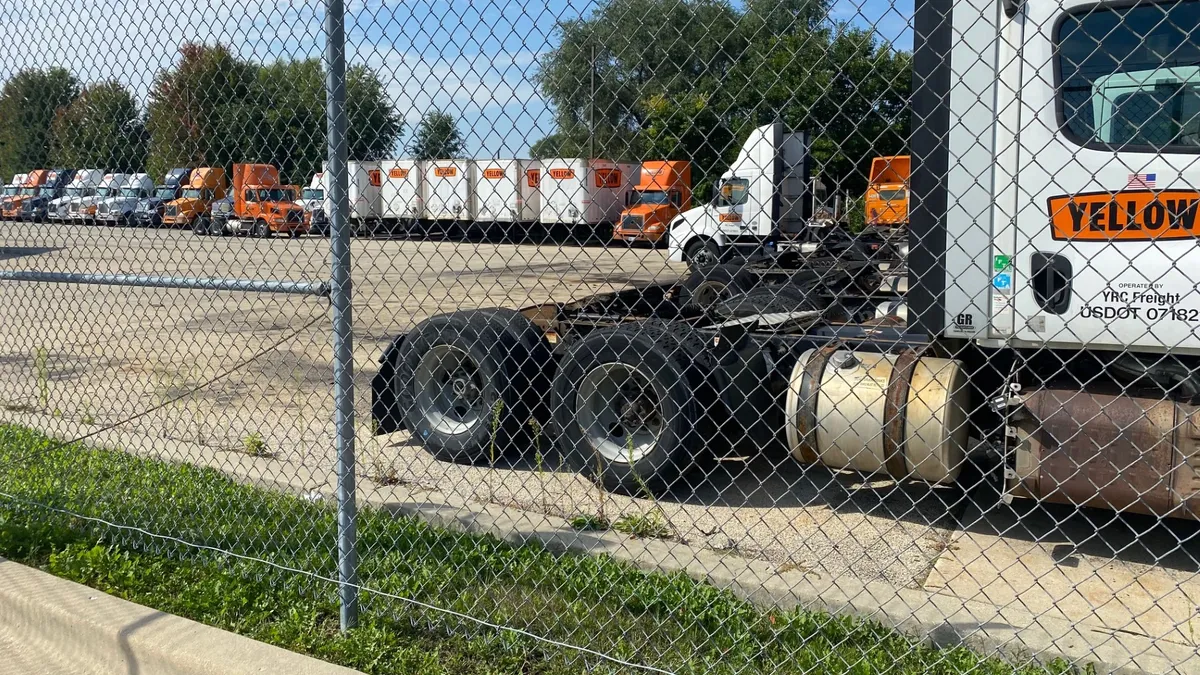SAN DIEGO — A much-awaited address by the American Trucking Associations’ chief economist painted a sobering picture of an industry that’s fighting a three-year freight recession.
Challenges include tariff levels not seen since the 1930s and heavy-duty truck import tariffs that could add $10,000 to the cost of certain trucks, SVP and Chief Economist Bob Costello said Oct. 27 at the ATA’s 2025 Management Conference & Exhibition.
“These continue to be unprecedented times. It doesn't mean it's all bad,” he said, adding that the lingering mismatch between supply and demand is improving.
Here are five takeaways from his speech.
1. What's happening with the trucking industry and economy now?
Job growth is slowing, and the top 20% of earners are responsible for two-thirds of spending, Costello said. The latter issue isn’t concerning currently but something to watch, he added.
However, the cumulative effects of inflation from 2020 to now have made households more cautious, and merely cutting interest rates doesn’t mean an automatic acceleration of the economy, he said.
Adding to those risks, trucking costs have climbed higher and higher even though revenue-per-mile amounts have declined. In an ATA index covering truckload that excludes fuel expenses, those trucking costs are a staggering 26% higher than revenue.
That disparity has put incredible stress on the trucking ecosystem.
2. How is trucking supply reflecting freight realities now?
Costello expressed confidence that trucking supply is coming out of the system, whether from companies bringing their driver levels down, federal policies like English language proficiency enforcement changes or other market dynamics.
“There is no doubt supply has been slow to leave, painfully slow, and that's not easy for me to say — it's people's livelihoods; it's their jobs and businesses they've created,” he said. “But the fact of the matter is we have been in a sustained situation where supply has been more than demand out there.”
Multiple data sources suggest a contracting employment picture, such as Federal Motor Carrier Safety Administration operating authority data, an imperfect measure but one that can show trends.
Other U.S. Labor Department data, which can act as a proxy for the level of company drivers, also indicated a nearly 7% decline in a non-local trucking employment measure since a 2022 peak, Costello said.
3. What should we know about tariffs?
Tariffs are an aggressive way to try to obtain more preferable trading terms, but their painful impacts can spread throughout the supply chain.
About 50% of imports coming into the U.S. are semi-finished products, so increased tariff levels mean higher prices that will hurt U.S. manufacturers and consumers, Costello said.
“You also hear people say, ‘Oh, but the tariffs are like a one time, you know, hit.’ It's not one time, by the way,” he said. “It goes on for months and months and months.”
The U.S. economy is still just beginning to see the effects of this trade policy, too. “We are in the bottom of the second or top of the third inning in terms of impacts of the tariffs,” Costello said.
4. When will the market improve?
The joke in the industry has been we’re just two quarters away from improvement, a projection that has carried on for years.
“But we're moving in that direction. That's what I can tell you,” Costello said, responding to a live question during his speech.
In earlier remarks, he noted a series of tariffs are putting pressure on supply chains, including heavy-duty truck tariffs for imports that will directly affect certain imports from Mexico.
“I'm not suggesting that we're going towards a great recession, or that we're even going to see a recession in the next year, but households are worried, and it is something to continue to watch for as we move forward. And why is that? Because the labor market has weakened and weakened significantly,” he said.
5. How will the market improve?
While analysts frequently comment that demand is needed to improve the market, there’s a dynamic relationship between demand and supply levels, and Costello said that tightening the supply will be a key step.
“Any recovery in trucking is not going to come from the demand side, not anytime soon,” he said, adding that such a change could eventually happen in the future. “But this is going to be a supply driven change in in the market.”
He did note that after the 2001 recession, freight conditions barely improved, but the industry saw a lot of capacity leave, and the market did change.
Costello also noted that high operating costs could cause an acceleration of trucking business failures. Adding to that pressure are government policy changes regarding ELP enforcement, non-domicile CDL identification requirements and trucking driver visa restrictions.


